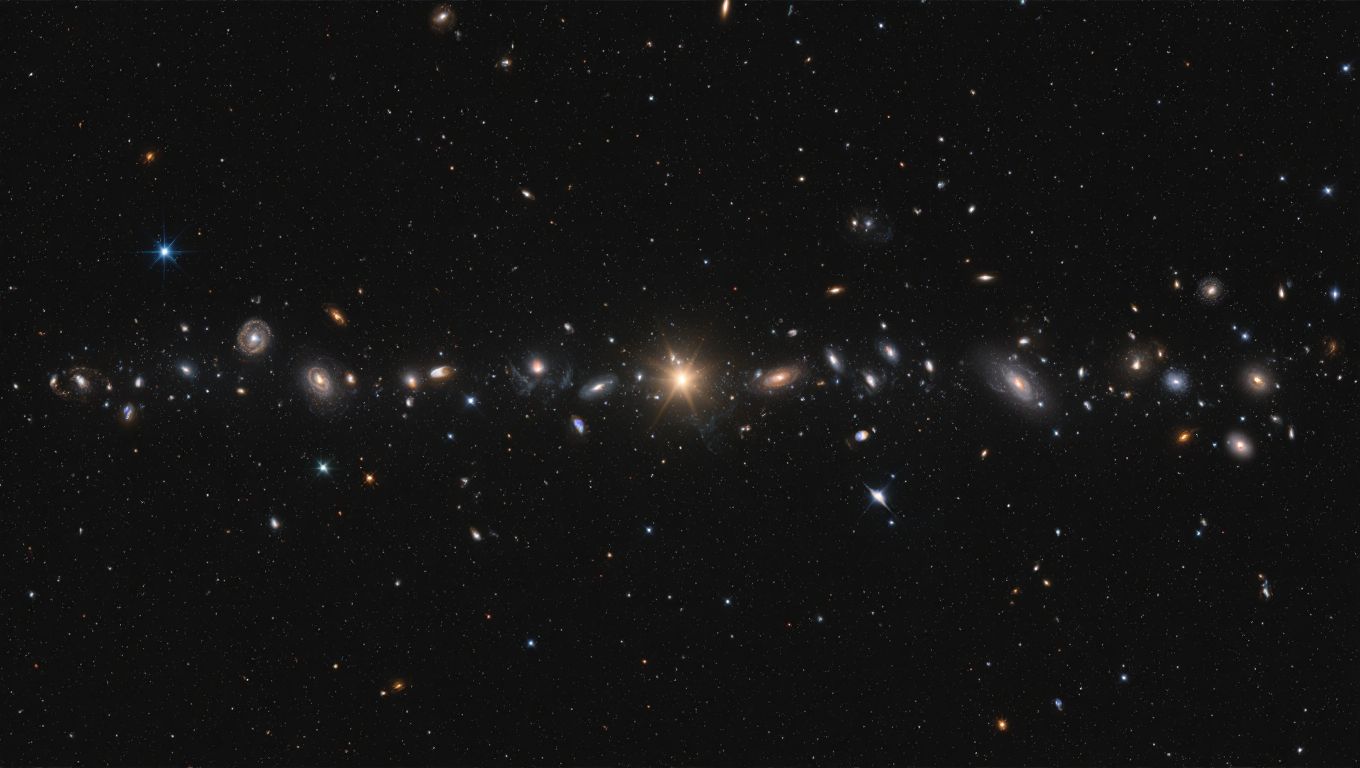Follow us on Google News (click on ☆)
Discovered in 2014, the Hercules-Corona Borealis Great Wall is a giant filament of galaxies stretching billions of light-years. An international team led by István Horváth has refined measurements of this structure, finding it extends across a greater radial distance than previously estimated.

Conceptual view
Gamma-ray bursts, emitted during the death of massive stars or neutron star collisions, serve as cosmic beacons. Their exceptional brightness allows mapping matter distribution in the Universe, revealing the location of even the most distant galaxies.
The Great Wall measures approximately 10 billion light-years long, representing nearly 10% of the observable Universe's size. This discovery challenges the cosmological principle, which states the Universe should be homogeneous and isotropic on large scales.
The team used a catalog of 542 gamma-ray bursts, primarily observed by the Fermi and Swift space telescopes. This data, accumulated over 20 years, enabled better mapping of this gigantic structure.
Future missions like ESA's THESEUS promise to expand our understanding of these cosmic structures. With increased sensitivity, they could reveal the full extent of the Great Wall and similar structures.
This study, available on arXiv, opens new perspectives on the formation of large-scale cosmic structures. It highlights the importance of gamma-ray bursts as tools for exploring the cosmos's farthest reaches.
How do gamma-ray bursts reveal cosmic structures?
Gamma-ray bursts (GRBs) are the Universe's most luminous explosions. They occur during black hole formation, either from the collapse of a massive star or the collision of two neutron stars.
These events emit particle jets at near-light speeds. When these jets interact with surrounding material, they produce gamma and X-rays visible across cosmic distances.
By mapping GRBs, astronomers can identify regions where matter is concentrated. This method detects galaxies too distant for direct observation.
Thus, GRBs serve as cosmic lighthouses, illuminating the Universe's large-scale structure and revealing galaxy clusters like the Hercules-Corona Borealis Great Wall.
Why does the Great Wall disrupt cosmological models?
The Hercules-Corona Borealis Great Wall spans 10 billion light-years, a size problematic for the cosmological principle. This principle assumes the Universe is homogeneous and isotropic on large scales.
According to this principle, no structure should exceed 1.2 billion light-years, a limit imposed by the Universe's age. The much larger Great Wall suggests matter isn't uniformly distributed.
This discovery may require revising cosmological models. Some theories, like those including larger primordial fluctuations, could explain such structures' existence.
The Great Wall thus presents a challenge to our Universe understanding, prompting scientists to explore new theoretical avenues.